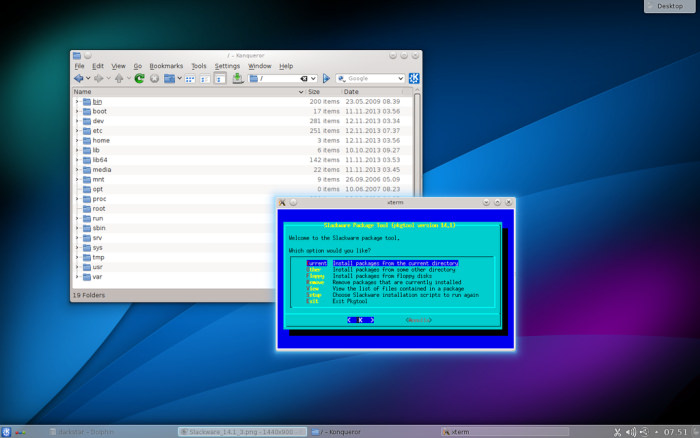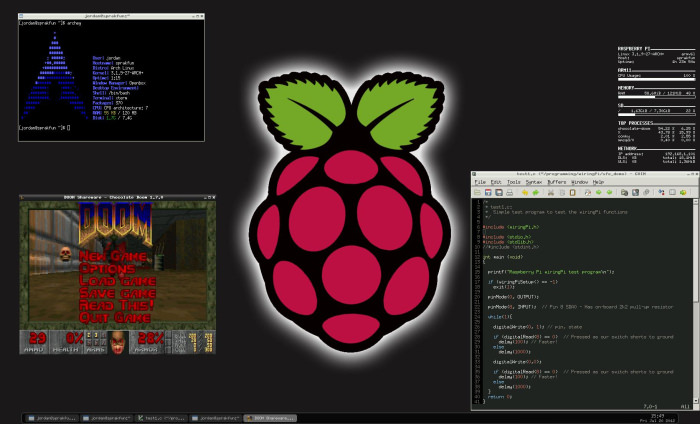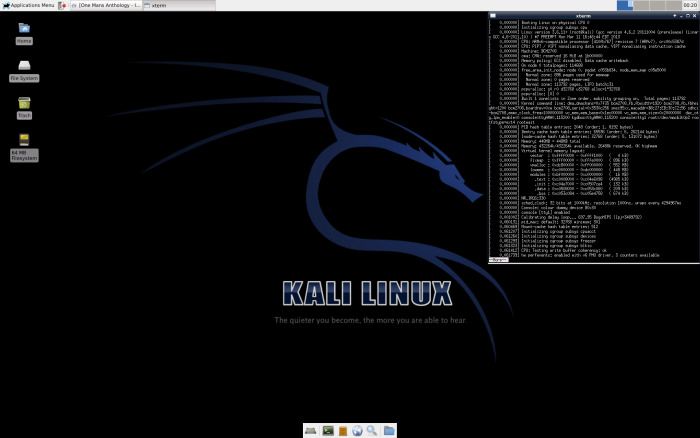You’ve probably seen our compilation of awesome things you can build and use powered by a Raspberry Pi. Even if you may not be a fan (in which case here are alternatives), you can’t ignore the possibilities that this small yet resourceful single-circuit board can do. But if you aren’t interested in making your Pi power up a custom-build gadget for your home, you can just turn it into a lightweight yet still powerful general purpose computer.
Here are 10 operating systems that you can load up onto your Raspberry Pi to get it started on a road to general purpose computing. These OS come with essential apps (and some pretty cool special features) that get things going upon boot up. Let’s check them out.
1. Raspbian


A free Debian-based OS optimized for Raspberry Pi’s hardware, Raspbian comes with all the basic programs and utilities you expect from a general-purpose operating system. Supported officially by the Raspberry foundation, this OS is popular for its fast performance and its more than 35,000 packages.
The easiest way to install Raspbian on your Pi is by deploying its image file onto an SD card. It uses the lightweight LXDE desktop for its user-friendly graphical session. Its helpful community supports and develops free software for Raspbian, and you’ll need a 8 GB SD card to load its latest version, Jessie.
2. Ubuntu MATE


Ubuntu MATE is a stable and simple OS, which brings a configurable yet still light-on-resources MATE desktop for its users. It is especially good for devices short on hardware specs, making it perfect for Raspberry Pi devices that can’t run a composite desktop. MATE desktop comes with essential apps like a file manager, text editor, image viewer, system monitor, document viewer and terminal.
Unlike Snappy Ubuntu, Ubuntu MATE is original Ubuntu with an APT package manager and Ubuntu’s Software Center. It also works with remote workstation solutions like LTSP and X2Go, and comes with themes and artworks similar to Ubuntu. For loading its latest version, Ubuntu MATE 15.10 (Wily Werewolf) on Raspberry Pi, developers recommend 4GB or more high-speed SD card.
3. Pidora


Pidora is a remix of the well-known Fedora operating system for Raspberry Pi. Designed from the latest build of Fedora for the ARMv6 architecture, Pidora allows greater speed, and carries applications and components from the Fedora 20 package set.
This Linux distribution also comes with other software besides including the essentials provided by Raspberry Pi Foundation for device access. The main attraction in its feature set is the "Headless mode", which lets you set up the OS on Pi devices lacking a monitor or display.
4. Linutop


An OS that can be quickly set up on a Raspberry Pi, Linutop uses a Raspbian-base with classic and lightweight XFCE graphical environment. It’s also handy for secure professional uses, such as in Kiosks casting public access or in embedded systems like electronic devices.
Linutop can be configured quickly for every purpose and boots in under 30 seconds. Its security features include a "read-only mode" where alterations aren’t saved unless you input the password, rendering viruses and hack attempts fruitless. It runs well on modest specs of 800 MHz and 512MB RAM.
5. SARPi


Short for "Slackware ARM on a Raspberry Pi", SARPi is a community product of Slackware Linux enthusiasts. Considered widely as one of the best OS choice for Raspberry Pi, this can be installed on an 8 GB SD card. Although the ARM version doesn’t support all the apps, but most applications (including essential ones) have been ported for the ARM architecture.
Slackware is easy to use even if you’re unfamiliar with how Linux works, which is why SARPi is a good choice for Raspberry Pi novices. The website offers a step-by-step rundown of the setup process if this is your first time setting SARPi up on a mini-computer.
6. Arch Linux ARM


A version of Arch Linux ported for ARM computers, Arch Linux ARM offers versions 6 and 7 for Raspberry Pi and Raspberry Pi 2 respectively. Its design philosophy promotes simplicity and user-centrism, ensuring that Linux users are in full control of the system.
Its packages are signed by the build system, and it can be updated through daily small packages, as opposed to huge updates found in other OSs. Most of these packages are improved for the best performance even on low specs. A minimum of 2 GB SD card suffices for loading its latest version.
7. Gentoo Linux


An open source Linux-based computer OS, Gentoo Linux compiles source code locally according to the user’s preferences to uphold performance. For this reason, Gentoo Linux’s builds are often optimized for a specific type of computer, such as Raspberry Pi.
Other than the near limitless adaptability, this Linux distro uses Portage software management that increases security and streamlines performance. It’s also easy to install and update software, and even build custom packages from existing ones. Its website recommend installing it on a 4 GB SD card.
8. FreeBSD
A computer OS used to power servers, embedded systems as well as computers, FreeBSD offers advanced networking, security and storage features. Its powerful networking services make it the platform of choice when setting up an Internet or Intranet server, thus ensuring fast response times and robust memory management.


The ARM versions of FreeBSD supports Raspberry Pi and Raspberry Pi 2, and the images of its latest version (10.2) can be written on to 512 MB SD card. Its small size requirement and fast performance makes it a suitable choice to install on a Pi chip.
9. Kali Linux


Kali Linux is an advanced penetration platform with versions designed to support Raspberry Pi. A Debian-based Linux distribution, this OS has several tools for information security operations such as penetration testing, forensics, and reverse engineering. It’s not limited to those operations as it is suitable for a general-purpose OS too.
A rebuild of the famous BackTrack Linux, it is a free platform under continuous development and comes with comprehensive support for devices and networks. It offers customizability that extends down to the Kernel level, and its installation is recommended on a 8 GB SD card.
10. RISC OS Pi


RISC OS Pi is the latest version of the RISC OS designed for Raspberry Pi. RISC OS Pi brings an alternative desktop environment and a stack of heavily functional applications for the Pi board. If creating a boot image is too much work, you can get a specially prepared SD card preloaded with the RISC OS.
The USP of this platform is that it’s light and super responsive. It also offers a minimized version called RISC OS Pico that’s just 3.5 MB in size (for ZIP file) and is targeted for Pi hackers and modders. RISC OS Pi requires a SD card of minimum 2 GB to run on Raspberry Pi.
Do you use Pi for general-purpose computing? Which OS have you installed on your Raspberry Pi? We look forward to your answers via comments section.
The post 10 Best Raspberry Pi OS for Everyday Computing appeared first on Hongkiat.
https://goo.gl/hYDEHJ
No comments:
Post a Comment